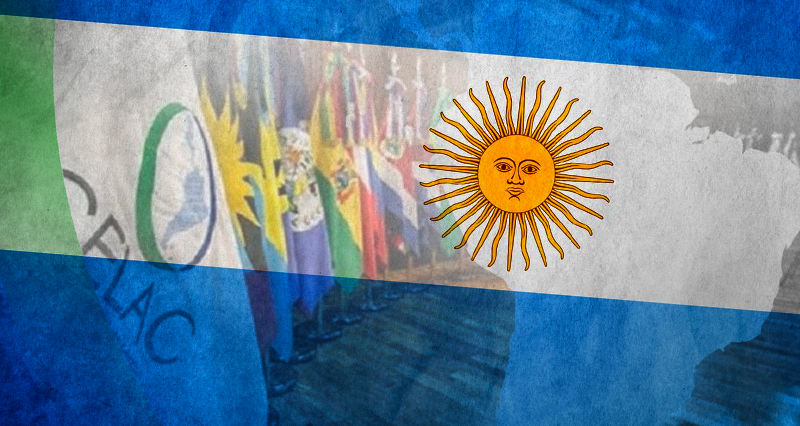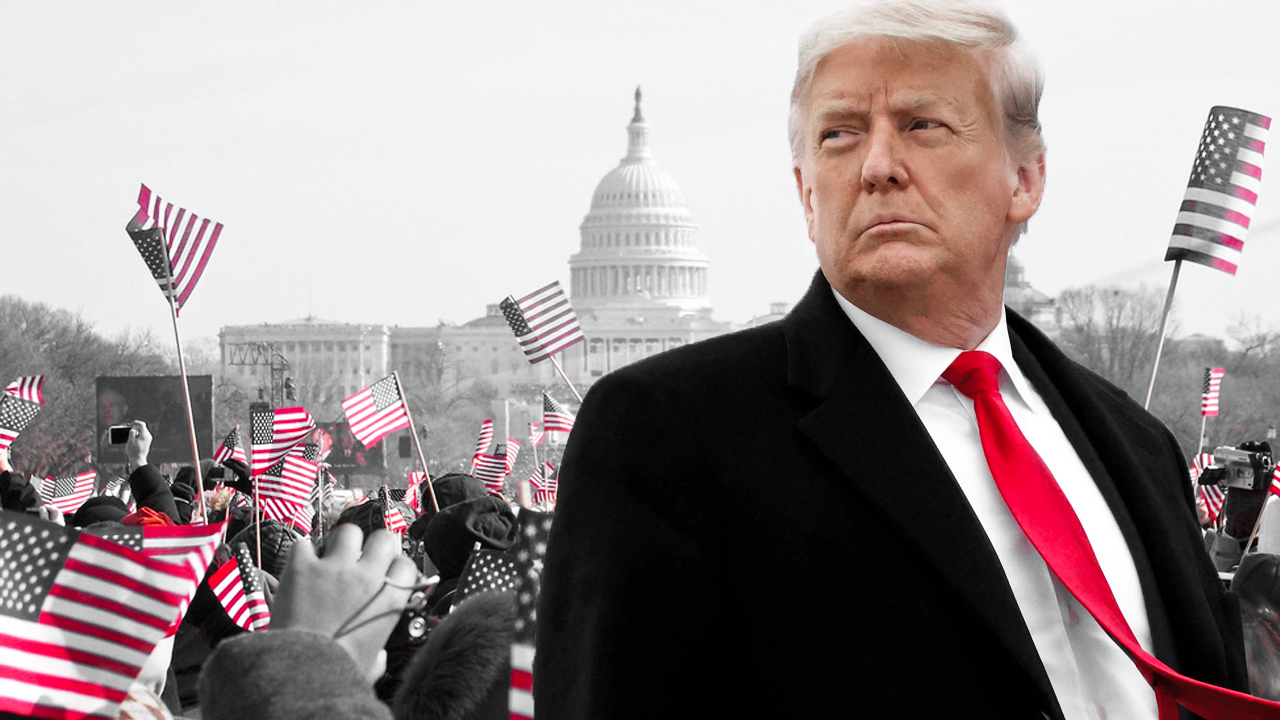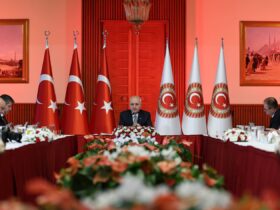The history of international relations in Latin America is the history of the unresolved contradiction between the Monroist and Bolivarian thoughts. The first gave rise to the Pan-American idea based on the hegemony of the United States over the region, where the rest of the countries have a subordinate and submissive position.
The Bolivarian thought originated as a need to coordinate the “American republics formerly Spanish colonies” so that they “serve us as advice in major conflicts, as a point of contact in common dangers, as a faithful interpreter of public treaties when difficulties occur, and, finally, conciliator of our differences” according to the idea of the Liberator formulated in the convocation to the Congress of Panama in December 1824.
Almost 70 years later, in the essay “Nuestra América” published on January 10, 1891 in the New York Illustrated Magazine and, a few days later in the Mexican newspaper El Partido Liberal, José Martí presented a more comprehensive idea than that of Bolívar in terms of the identity that integrates us and should unite us. Martí said: “[…] from the Bravo to Magellan, sitting on the back of the condor, the Great Semi watered the seed of the new America for the romantic nations of the continent and for the painful islands of the sea!”
Lincoln’s America vs. Juárez’ America
A little over a year earlier, on December 19, 1889, on the occasion of an artistic-literary evening held at the Hispano-American Literary Society of New York, attended by delegates to the International American Conference convened by Washington to concretize the Monroist idea, Martí wanted to warn the bewildered representatives of the southern republics whom the hosts had overwhelmed by showing them the ostentatious marvels of the nascent capitalism that: “… however great this land may be, and however anointed the America where Linconl was born may be free; but for us, in the secret of our chest, without anyone daring to cross it out or hold it against us, it is greater, because it is ours and because it has been more unfortunate, the America where Juárez was born.” On that way was sown what was going to be the identity of ‘Our America’ and that unites us was sown forever.
The Monroist thought emerged from the speech of President James Monroe before the Congress of his country on December 2, 1823. It transformed into a foreign policy doctrine of the United States for Latin America and the Caribbean later. Although throughout that century there were some attempts to its institutionalization, it was in 1889 when the intention of giving a structure to such an idea would materialize. For this purpose, the first Pan-American conference was convened. From then until 1954, two inter-American conferences, four consultation meetings, and ten Pan-American conferences were held.
In the ninth, held in Bogotá in 1948, within the framework of a new reality arising from the end of the Second World War, the Organization of American States (OAS) was created. The previous year in Rio de Janeiro, the Inter-American Treaty of Reciprocal Assistance (TIAR) had been signed, which gave rise to a supposed collective security system for the Americas. In this way, counting on the military and political instruments, the United States managed to consummate a structure of domination that guaranteed its control over the region. The Monroist idea of “America for the Americans” (read United States) had been completed. The more recent story is quite well known.
The Bolivarian thought seemed dead with the physical disappearance of the Liberator in 1830. But from that year on, various Latin American thinkers and politicians continuied Bolívar’s ideas in their writings and in their work. Likewise, two events were held in Peru in the middle of the 19th century, in 1847-48 and in 1864-65, where participants from various countries gathered to not let the Bolivarian idea die and resume its proposal for unity.
But it was necessary to wait almost 150 years until Hugo Chávez, the most distinguished follower of Bolivarian thought, began to change that perspective. Chávez set out to transform the unjust structure of regional domination, beginning the recovery of the Bolivarian dream to turn it into the project that had been truncated in 1830.
Chávez and the birth of CELAC
Thus, in 2010, the Summit of Unity of Latin America and the Caribbean was held in the Mexican Riviera Maya after the merger of two previously existing mechanisms. The following year, within the framework of the bicentennial of the independence of Venezuela, at a summit meeting of the leaders of the region, the Community of Latin American and Caribbean States (CELAC) was born. On that occasion, Commander Chávez declared that “We are laying here the cornerstone of the unity, independence, and development of Latin America and the Caribbean.”
Just a few years later, the oligarchic advance in the region generated centrifugal forces that, under strong Monroist influence, acted as a disintegrating element, responding to the United States’ need to prevent Latin American and Caribbean unity from coming to fruition.
The coming to power of Andrés Manuel López Obrador and the extraordinary effort of the Mexican government in favor of integration allowed the project to resume in 2020, once again rescuing Bolívar’s ideology as an instrument for the consolidation of regional unity. And so we arrived at Buenos Aires 2023.
The Summit in Buenos Aires
The Summit meeting that ended this week in the Argentine capital showed great lights, but also some grays and shadows. The shadows are related to the information transmitted by the transnational disinformation media: “The CELAC Summit begins without Maduro”, “The CELAC Summit is held with many absences”, “López Obrador distanced from Alberto Fernández, does not travel to Buenos Aires”. The headlines reflect a hatred, a negativity and a commitment to failure that clearly express the Monroist desire for disintegration that emerges from the fictitious press that responds to imperial and oligarchic interests.
On the other hand, the Peruvian crisis showed that on some issues there is no consensus and that, finally, the issue of human rights is politicized according to what the United States and the oligarchies -still in power- understand, regarding the political use that should be given to this matter. There was no single, harsh and forceful statement against the imprisonment of President Castillo, the repression of the Peruvian people, the violation of university autonomy and the assault on the much-vaunted democracy.
Similarly, the invitation to the United States to the Summit is obscure. Just as the Vice President of Colombia Francisco Santander invited Washington to the Congress of Panama in 1826 behind the Libertador’s back, Alberto Fernández invited without any need Joe Biden, president of a country that excludes us and despises us, to the Summit.
The absence of President Maduro should also be considered as a black point of the Summit. A country in which the vice president is alive by chance after a terrorist attack against her did not give security to the president of Venezuela. It is one thing to be brave and another to be stupid. We must not forget that the United States government put a price on the head of President Maduro. For 15 million dollars, any crazy person – and others not so crazy – will be absolutely willing to commit assassination. The “investigation” of the attempted assassination of Vice President Cristina Fernández reveals the full collusion of justice, the media, the extreme right and organized crime in Argentina, in order to generate complicity and impunity.
The courage of President Maduro is not manifested by attending the Summit or not, but by the resistance of 8 years at the head of the Venezuelan people to stand up and defeat all the actions of terrorist and destabilizing groups organized and financed by the United States, and to leave victorious over it. In particular, Venezuela is always represented in Argentina by the immense expressions of friendship of millions of citizens who have given continuity for 200 years to the fraternal embrace of Guayaquil between the Liberators José de San Martín and Simón Bolívar.
Looking to the future, we will have to move forward to shed light on the gray areas that still remain. There is still no single idea of integration. I am not referring to what the cavemen and Monroist right-wing are thinking, but rather to the very interpretations that are made in the region of the Bolivarian ideology. In this sense, President López Obrador’s calls for goodwill from the United States towards the region are misleading.
Our integration will be Latin American – or it will not be
Beyond good wishes, that has no chance of getting real. The imperialist condition of the United States is in their DNA, if they renounced it they would become something else and there is no sign for that. Cubans have known this for more than 60 years, Nicaragua since 1979 and Venezuela since Comandante Hugo Chávez came to power. Our integration will be Latin American and Caribbean or it will not be. Talking about a great American space that includes the United States is still nonsense that contradicts what President López Obrador himself has said on other occasions. But the situation in Mexico is understandable, being “so far from God and so close to the United States.” In any case, we must not forget that Cuba is in the same situation.
CELAC needs an institutional body
For his part, President Petro, almost obsessively wants to generalize without foundation a personal situation that was resolved positively in his favor when he was irregularly and illegally removed as mayor of Bogotá. Once all internal instances had been exhausted, he appealed to the Inter-American Court of Human Rights (IACHR), which reversed the ruling of the Colombian justice, reinstating him in his post. But from there to assuming that this institution dependent on the OAS, of which the United States and Canada are not part but over which they have decision-making power, could be the summum of a common human rights policy, it is still a chimera.
If we believe in CELAC, we must be able to create an institutional body, with its own institutions, including human rights, in order to solve our problems without interference from the United States.
I do not doubt the integrationist will of presidents López Obrador and Petro, but I feel obliged to point out these gray areas that I am completely sure will be resolved through dialogue and fraternal debate.
CELAC should also seek mechanisms that make it possible for a greater number of heads of state and government to participate in the Summit meetings. Otherwise, they must be done by teleconference with the face-to-face participation of foreign ministers and technicians for the drafting and review of the documents to be approved. Although all the countries were present in Buenos Aires, the absence of a part of the leaders shows that the United States still generates fear by using the instruments of coercion, threat and blackmail that make up its wide arsenal.
In any case, the lights are so many that they cover any nonsense and petty impression one has of the Summit. The most important thing of all is that, despite the intimidation, coercion and pressure from reactionary forces and those opposed to integration, the meeting has been realized. In this area, we must thank the great work of the government and the Argentine Foreign Ministry.
Collective leadership of the region
The holding of the Summit in Buenos Aires after the one held in 2020 in Mexico makes it possible to resume the continuity of these events and with this makes it possible to think again that the integration of the region is possible. The imperatives of unity and the recognition of the majority of the need to build by accepting diversity, as well as the will to move towards integration with development based on inclusion, are unmistakable signs of a promising future.
The reincorporation of Brazil and the possibility of adding presidents Lula and Petro to the necessary collective leadership of the region, leaving behind the medieval obscurantism of Bolsonaro and Duque, are also unquestionable signs that the region is moving in a positive direction.
The election of Saint Vincent and the Grenadines and its Prime Minister Ralph Gonsalves as president pro tempore of CELAC is an unquestionable recognition of the island countries of the Caribbean. It is worth saying that the OAS, that is, the United States, has never allowed a Caribbean person to access the highest position of that organization. The democracy that is expected to exist in CELAC must be egalitarian. As a characteristic of Bolivarian integration, the differences that emerge from the geographic dimension, the number of inhabitants, or the size of the economy of the member countries should not matter at the time of decision-making. This is what has made it possible for St. Vincent and the Grenadines to be elected by consensus to represent the entire region as of today and for one year.
The constitution of the social CELAC and the holding of its own Summit in Buenos Aires is an expression of what the peoples of Our America have learned from the past. Governments come and go, the peoples persist in their struggles, among them those that fight to make Latin American and Caribbean unity effective. Integration will only be irreversible when the people take charge of it. Happily, the agreements of the CELAC Social Summit point in that direction.
Declaration of Buenos Aires
The Declaration of Buenos Aires, the final instrument of the conclave, reiterates the commitment of all “to advance unity and regional political, economic, social and cultural integration.” The 111 points of the document in addition to the 11 special declarations form a solid base of work to advance correctly towards the future.
From my point of view, points 92 and 93, as well as 98, are of particular interest. The first two recognize the “relevance of intervening in a concerted manner and presenting consensual initiatives in the different multilateral forums.” Thus, also the need to: “Promote […] a greater number of joint interventions in all multilateral forums on issues of common interest, convinced that this will directly contribute to strengthening the role and leadership of the region in international organizations.” The idea of advancing towards the construction of a true regional power bloc that shows us that way before the world gives this declaration a strategic character.
On the other hand, point 98 states: “We welcomethe progress achieved in terms of deepening the political dialogue of Latin America and the Caribbean with extra-regional partners, including the European Union, China, India, the African Union and the Association of Southeast Asian Nations (ASEAN)”. I don’t know if it was an oversight, a consensual decision or a necessary goof, but the United States does not appear anywhere, marking the clear willingness of the region to relate to global power blocks that recognize us on equal terms. Perhaps it is simply the acceptance that there is no “political dialogue” with the North American power or that it is not considered an “extra-regional partner.”
Finally, as President Petro said, we must move from rhetoric to actions and facts. If the Buenos Aires Declaration is fulfilled, all the countries of the region should regularize their relationship with Caracas, returning to the normality that existed before Obama and Trump proposed to overthrow President Maduro by force. From my perspective, point 104 referring to Venezuela, although it is an advance, is still weak in the recognition of the constitutional government of President Nicolás Maduro.
At the end of this event and looking to the future, with Martí we could ask ourselves: Where is America going, and who unites and guides it? And with the apostle of the independence of Cuba responding: “Alone, and as a single people, it rises up. Fights alone. She will win, alone.”

















Leave a Reply